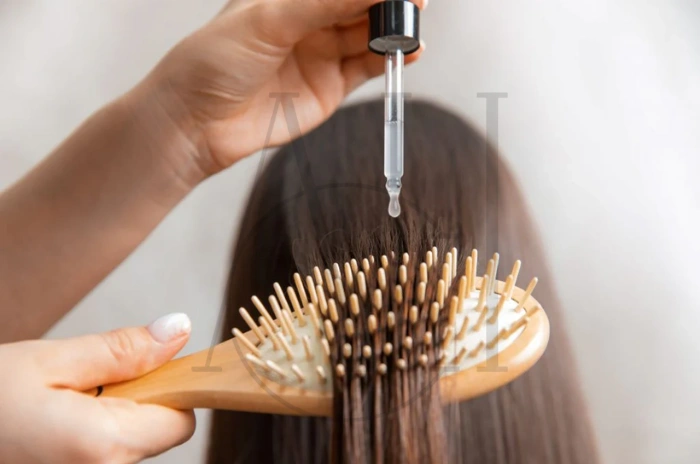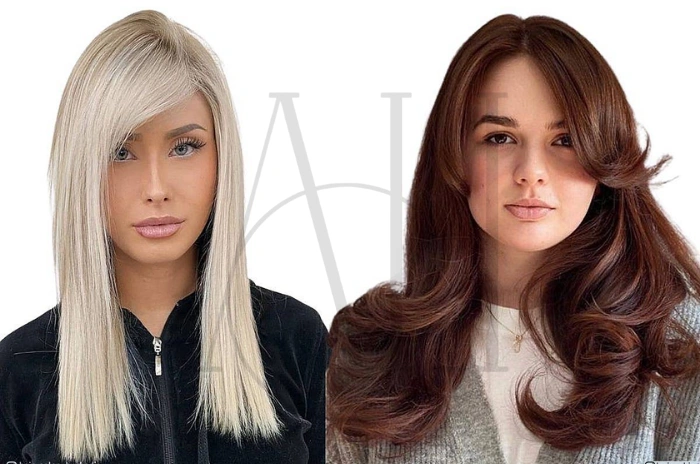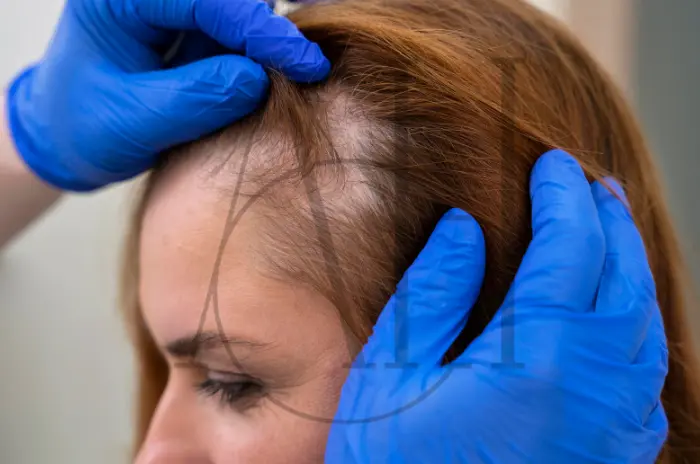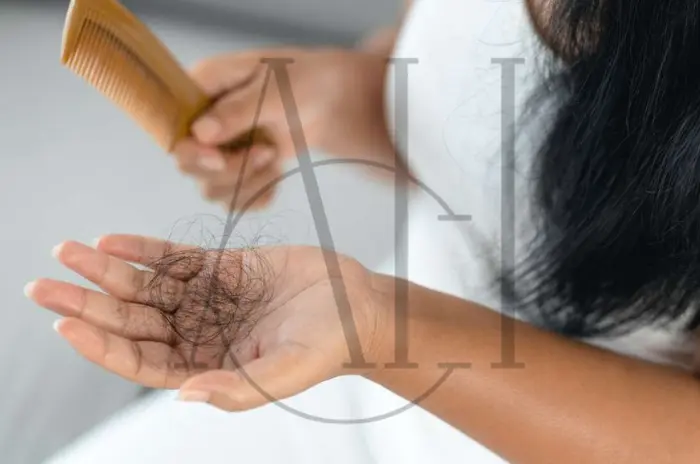Understanding your hair type is the foundation of proper hair care. Whether you have thin vs thick hair, knowing the specific needs of your strands can transform your daily routine and overall hair health. Hair thickness affects everything from styling choices to product selection, making it essential to identify your hair type correctly.
Many people confuse hair thickness with hair density, but these are two distinct characteristics. Fine vs thick hair differences go beyond what meets the eye, involving the actual diameter of individual strands and how they respond to various treatments and products.
Table of Contents
ToggleWhat thin and thick hair really mean
Thin hair refers to the diameter of individual hair strands, not the amount of hair on your head. When examining fine vs thin hair difference, thin hair has a smaller circumference, making each strand more delicate and prone to breakage. This type typically feels soft and silky to the touch but may appear limp or lack volume.
Thick hair features strands with a larger diameter, creating a more robust and resilient structure. These individual hairs can withstand more manipulation and styling without damage. Thick hair often feels coarser and has a stronger texture that holds styles well but may be harder to manage.
Understanding hair thickness vs hair density is crucial for proper care. Density refers to how many hair follicles you have per square inch of scalp, while thickness describes the width of each individual strand. You can have high-density thin hair or low-density thick hair, creating unique care requirements.
What’s the Difference Between Thin and Thick Hair?
The primary difference between thin vs thick hair lies in the structure and behavior of individual strands. Thin hair breaks more easily, responds quickly to humidity, and often lacks natural volume. It may appear flat against the scalp and struggle to hold curls or waves for extended periods.
Thick hair provides natural volume and body but can become frizzy or unruly in humid conditions. It typically holds styles longer and can handle heat styling better than thin hair. However, thick hair may resist certain styling attempts and require stronger products for effective results.
To determine how to tell if hair is fine or coarse, perform a simple strand test. Take a single hair between your fingers – if you can barely feel it, you likely have thin hair. If the strand feels thick and rough, you have coarse or thick hair. Medium hair falls somewhere in between these textures.
Color also plays a role in perception. Darker hair colors often appear thicker than lighter shades, even when the actual strand diameter remains the same. This optical illusion can affect how you perceive your hair type.
Best Haircare Tips for Thin Hair
Thin hair care requires a gentle approach that focuses on adding volume without weighing down strands. Start with lightweight formulations that won’t create buildup or make hair appear greasy. Heavy products can quickly overwhelm thin hair, making it look flat and lifeless.
Gentle cleansing is essential for thin hair health. Use a volumizing shampoo that removes excess oil without stripping natural moisture. The best shampoo for thin hair contains ingredients like biotin, keratin, or rice protein that add strength without heaviness.
Avoid over-washing, which can strip essential oils and make thin hair appear even more sparse. Most people with thin hair benefit from washing every other day or every two days, depending on their scalp’s oil production.
Heat protection becomes critical for thin hair since these delicate strands are more susceptible to damage. Always apply a heat protectant before using styling tools, and keep temperatures moderate to prevent breakage.
Consider treatments like minoxidil for thinning hair if you’re experiencing hair loss. However, consult with a healthcare professional before starting any hair loss treatments to ensure they’re appropriate for your specific situation.

Best Haircare Tips for Thick Hair
Thick hair care focuses on moisture, manageability, and frizz control. These robust strands can handle richer formulations and more intensive treatments that would overwhelm thinner hair types. Deep conditioning becomes especially important for maintaining healthy thick hair.
Choose shampoos designed for thick hair that provide thorough cleansing without over-drying. The best shampoo for thick hair often contains moisturizing ingredients like argan oil, shea butter, or glycerin that help manage texture and reduce frizz.
A thick hair detangling brush is essential for preventing breakage during styling. Look for brushes with flexible bristles that can work through tangles without pulling or snapping thick strands. Wet brushing with a wide-tooth comb works best for thick hair.
Regular trims help maintain thick hair health and prevent split ends from traveling up the hair shaft. A layered haircut for thick hair can reduce bulk and create more manageable styling options while maintaining volume and movement.
Daily care tips for thin hair
Establishing a consistent caring for thin hair routine helps maximize volume and minimize damage. Start each morning by gently brushing hair from ends to roots using a boar bristle brush that won’t cause static or breakage.
Use root-lifting products sparingly, focusing application at the crown and mid-lengths rather than the ends. Mousse works particularly well for thin hair as it provides lift without weight. Apply products to damp hair for even distribution.
Avoid sleeping on cotton pillowcases, which can cause friction and breakage. Silk or satin pillowcases allow hair to glide smoothly, reducing morning tangles and maintaining overnight styles.
Consider protective hairstyles that don’t put stress on fragile strands. Loose braids, gentle ponytails with soft hair ties, and simple updos help preserve thin hair while looking polished.
Daily care tips for thick hair
Thick hair care routine benefits from consistent moisture and careful styling to prevent frizz and maintain manageability. Begin each day by applying a leave-in conditioner or serum to damp hair, focusing on mid-lengths and ends where dryness typically occurs.
Section hair during styling to ensure even product distribution and heat exposure. Thick hair requires more time and attention during styling, but proper sectioning ensures better results and reduces the need for excessive heat application.
Use hair oils for thick hair control on the ends to add shine and prevent dryness. Natural oils like argan, coconut, or jojoba work well for thick hair without causing greasiness when applied correctly.
Overnight protection becomes important for thick hair, which can become tangled and frizzy during sleep. Consider loose braids or silk scrunchies to maintain style while preventing friction damage.
Products to use and avoid for each type
Hair products for thin hair should focus on volume, strength, and lightweight moisture. Volumizing shampoos, root lifts, and lightweight conditioners work best. The best conditioner for thick hair would be too heavy for thin strands, so choose formulations specifically designed for fine hair.
Avoid heavy oils, thick creams, and products containing sulfates that can weigh down thin hair. Skip leave-in conditioners on roots, and use dry shampoo strategically to maintain volume between washes.
Hair products for thick hair can handle richer formulations and intensive treatments. Deep conditioning masks, hair oil for thick hair ends, and smoothing serums help manage texture and add shine. The best conditioner for thick hair typically contains moisturizing ingredients that penetrate the hair shaft effectively.
For thick hair, avoid products that promise excessive volume, as they may create unwanted bulk. Instead, focus on smoothing and moisturizing products that enhance natural texture while maintaining manageability.
FAQ :Thin vs Thick Hair Types and Care
How do you determine if hair is thin?
Perform a strand test by rolling a single hair between your fingers – if you can barely feel it, your hair is thin.
What are the best products for thick hair?
Moisturizing shampoos, deep conditioners, hair oils, and smoothing serums work best for managing thick hair texture.
How can you add more volume to thin hair?
Use volumizing products, blow-dry with a round brush, and consider root-lifting techniques while avoiding heavy formulations.
What are the best hair tips for thick hair?
Focus on moisture, use appropriate detangling tools, consider layered cuts, and apply products in sections for even distribution.



